9.2.3: Oxides and Hydroxides
- Page ID
- 18552
| Oxide and Hydroxide Minerals | |
| oxides | |
| corundum | AlsO3 |
| periclase | MgO |
| magnetite | Fe3O4 |
| hematite | Fe2O3 |
| pyrolusite | MnO2 |
| rutile | TiO2 |
| cassiterite | SnO2 |
| ilmenite | FeTiO3 |
| spinel | MgAl2O4 |
| chromite | FeCr2O4 |
| hydroxides | |
| gibbsite | Al(OH)3 |
| diaspore | AlO(OH) |
| brucite | Mg(OH)2 |
| goethite | FeO(OH) |
| manganite | MnO(OH) |
We often group oxides and hydroxides together because they have similar compositions and atomic arrangements. The table to the left lists the most common of these minerals. These minerals often have similar properties, and most have relatively simple and related formulas. Oxide minerals consist of metal cations bonded to O2-. Hydroxide minerals contain (OH)– anion molecules in place of all or some O2-. We group quartz, the most common oxide, with silicate minerals, so it is not considered here.
A primary difference between oxides and hydroxides is the temperatures at which they form and are stable. Hydroxides are unstable at high temperature; they exist in low-temperature environments and are commonly products of alteration and weathering. Other oxide minerals – magnetite and ilmenite, for example – are high-temperature minerals generally associated with igneous or metamorphic rocks. In fact, most igneous and metamorphic rocks contain oxide minerals. Typically they are present in minor amounts, are easily overlooked, and may be difficult to identify.
Oxides and hydroxides have properties distinct from silicates and sulfides. They are often dominated by ionic bonding, and anions (O2-or OH–) do not control their structure and properties as anions do for other mineral groups. Oxides and hydroxides also are distinct from carbonates, sulfates, and other ionic minerals that often have relatively high solubilities in water.
Simple oxides contain one metal element and have formulas R2O, RO, or R2O3, where R is the metal cation. The different formulas reflect different valences of the metal cations. More complex oxides contain two different metals and have formulas XYO3 or XY2O4, where X and Y denote the metals. Oxides with general formula XY2O4 (spinel and chromite in the table) belong to the spinel group; they all have similar atomic arrangements but contain different elements. Magnetite, which contains both Fe2+ and Fe3+, also has a spinel structure and belongs to this group.
Some oxide minerals, for example corundum and spinel, come in many colors. Figure 3.41 (Chapter 3) shows red ruby and two different colored sapphires (blue and tangerine); all three are corundum. Sapphire may be other colors too, including white, pink, yellow, or orange. The photos below show four different colored spinels that were cut as gems. Pure spinel (which is rare) is clear or light gray like the stone in Figure 9.47 (below left), but most spinel contains trace metals that lead to a wide range of colors. Spinels may be various shades of red, purple, blue, yellow, orange, pink, or black, but red is most common. Some examples are in Figures 9.48, 9.49, and 9.50, below.
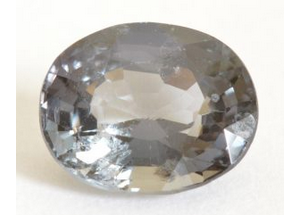
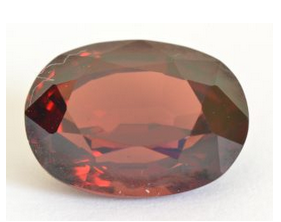

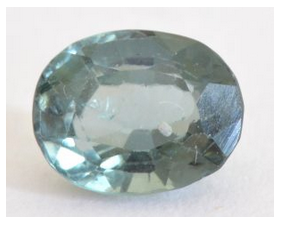
Dark colored oxides can be particularly difficult to tell apart, especially because the same mineral can have many different appearances. The photos below shos some typical examples. The top row contains iron oxides/hydroxides. Magnetite (Figure 9.51) is generally silvery or black. It is the only strongly magnetic mineral, which aids identification considerably. Hematite may have a metallic silver color (Figure 9.52) or may be dull to bright red (Figure 9.53) but, in either case, has a red streak. Figure 3.13 (Chapter 3) shows another example of red botryoidal hematite, and Figure 3.48 (Chapter 3) shows hematite’s red streak. Goethite (Figure 9.54), the most common component of rust, may be yellow-brown, black or reddish.
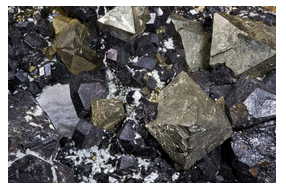
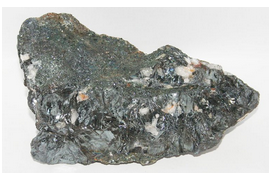
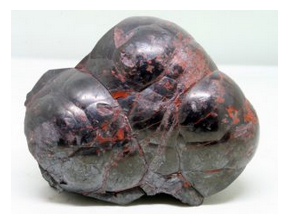
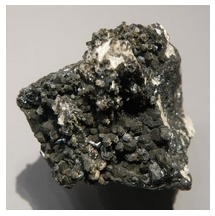
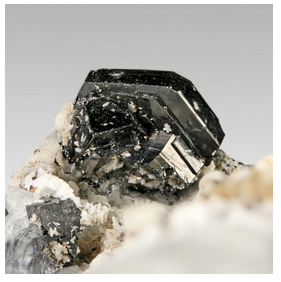
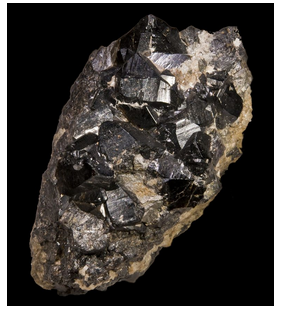
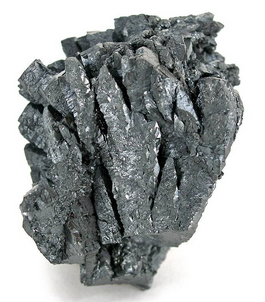
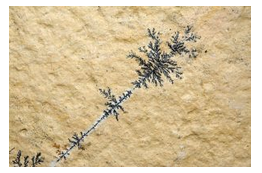
Figure 9.55 shows ilmenite, iron titanium oxide. It sometimes looks like an iron oxide (magnetite or hematite) but is nonmagnetic and has a black streak. The hexagonal flakes of ilmenite in Figure 9.55 are spectacular but rare. Cassiterite, tin oxide, is shown in Figure 9.56. It is harder than the other minerals seen here and often has an adamantine luster. Figure 9.57 is a photo of manganite, a manganese oxide/hydroxide. It shares properties with the other three minerals. The black arborescent mineral in Figure 9.58 is dendritic pyrolusite, manganese oxide, that crystallized along a fracture surface in limestone. Dendritic pyrolusite is sometimes mistaken as having an organic origin. Pyrolusite has other appearances and may be difficult to distinguish from other dense dark-colored minerals. But, it is the only common mineral that forms dendrites like the ones shown.


